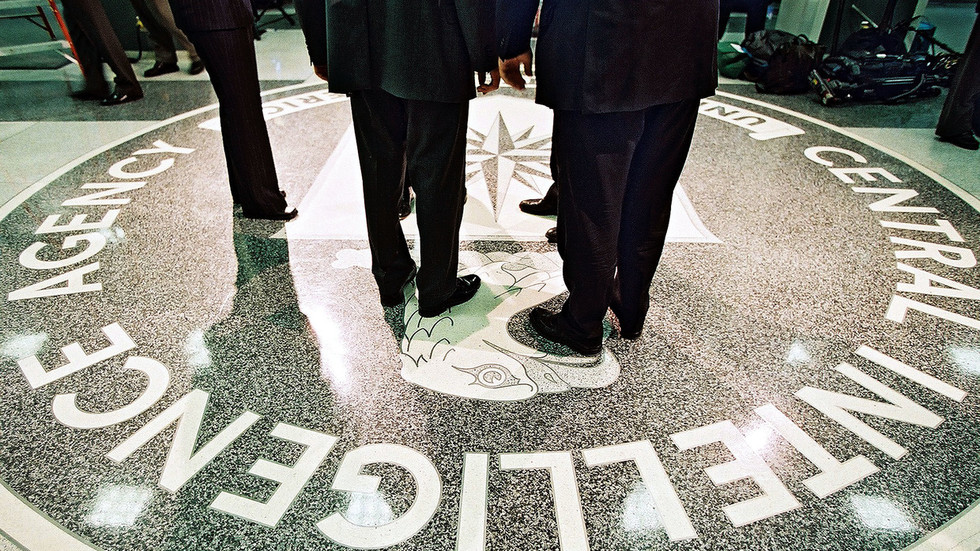What is a bank run?
01:59 - Source: CNN
- US stocks tumbled as investors fear the banking sector may have yet more problems to overcome. Credit Suisse’s shares fell sharply after the Saudi National Bank said it would not invest any more in the troubled Swiss bank.
- Wall Street continued to weigh the fallout of SVB’s failure as concern grows that more dominos could fall.
- Another key inflation report at 8:30 am ET could provide more wiggle room for the Fed to hike interest rates by just a quarter percentage point – or nothing at all – to avoid sending the banking sector into more turmoil.
- SVB collapsed last week and the Fed rescued the bank industry Sunday by injecting liquidity. That’s the opposite of what it has been doing for a year and puts the Fed in a difficult position, particularly if inflation comes in hotter than expected.
Credit Suisse’s shares were trading down nearly 22% in Zurich on Wednesday, and the cost of buying insurance against the risk of a Credit Suisse default hit a new record high, according to S&P Global Market Intelligence.
The crash spilled over into other European banking shares, with French and German banks such as BNP Paribas, Societe Generale, Commerzbank and Deutsche Bank falling between 8% and 10%.
Customers withdrew billions from Credit Suisse last year, contributing to the bank’s biggest annual loss since the global financial crisis in 2008. And the blows keep coming for Switzerland’s second biggest bank.
On Tuesday, it acknowledged “material weakness” in its financial reporting and scrapped bonuses for top executives.
Speaking to Bloomberg TV on Tuesday, Credit Suisse CEO Ulrich Körner said the bank saw “material good inflows” of money on Monday, even as markets were spooked by the collapse of Silicon Valley Bank and Signature Bank in the United States.
Outflows from the bank had “significantly moderated” after customers withdrew 111 billion francs ($122 billion) in the three months to December, Körner added. In its annual report, the bank said outflows had not yet reversed by the end of last year.
Körner said the collapse of SVB was “somewhat of an isolated problem.” Credit Suisse follows “materially different and higher standards when it comes to capital funding, liquidity and so on,” he added.

Shares of Credit Suisse crashed more than 20% to a record low after its biggest shareholder appeared to rule out providing any more funding for the embattled Swiss lender.
In an interview with Bloomberg, the chairman of the Saudi National Bank said it would not increase its stake in the Swiss lender.
“The answer is absolutely not, for many reasons. I’ll cite the simplest reason, which is regulatory and statutory. We now own 9.8% of the bank — if we go above 10% all kinds of new rules kick in, whether be it by our regulator or the European regulator or the Swiss regulator,” Ammar Al Khudairy told Bloomberg. “We’re not inclined to get into a new regulatory regime.”
Stocks: US stock futures tumbled after the Saudis said they would not bail out Credit Suisse, injecting new fear into the global banking system. Investors continue to wrestle with the SVB failure fallout and what it might mean for the Fed’s ability to balance its battle with inflation and the need to keep the banking sector secure. And key economic reports on inflation and retail sales also weighed on Wall Street.
Dow futures were down 500 points, or 1.5%. S&P 500 futures fell 1.6%. Nasdaq Composite futures were 1.4% lower.
Fear & Greed Index: 23 = Extreme Fear
Oil & gas: US oil prices were down 0.2% to $71 a barrel. Average US gas prices held steady at $3.47 a gallon.

US retail sales data for February, which are an important indicator of consumer spending and the health of the economy, is due Wednesday morning at 8:30 a.m. ET. This spending accounts for the majority of US economic activity and is closely watched by the Federal Reserve.
Analysts expect a significant drop in February, with sales decreasing by 0.3% — last month saw a 3% gain. But in this bad-is-good economy, that might give Wall Street a reason to celebrate, since it could mean the central bank will feel pressure to ease its rate hiking regimen.

February’s US Producer Price Index, which measures what suppliers are charging businesses, is expected to come in at 5.4% year over year (down from 6% in January) and 0.3% month over month (down from 0.7% in January).
PPI is one of several closely watched inflation gauges. Because the producer-centric index captures price shifts upstream of the consumer, it’s sometimes looked to as a potential leading indicator of how prices may eventually land at the store level.
Federal Reserve policymakers will be examining this data ahead of their two-day meeting next week. The central bank is largely expected to increase rates by another quarter point, according to CME Group’s FedWatch tool.

Last week, the Federal Reserve’s biggest concern was a stubbornly high inflation rate and how much to crank up monetary policy tightening.
In recent days, a new bogeyman emerged in the form of a trio of bank failures and the chilling specter of a financial crisis.
To stave off the latter, the Fed offered a solution that seemingly contradicted its hawkish flight path: looser purse-strings.
On Sunday, the central bank announced the creation of the Bank Term Funding Program, which will provide one-year loans to banks, credit unions and other financial institutions that offer up collateral such as US Treasuries, agency debt and mortgage-backed securities.
Those investments are typically safe, but have crumbled in value during the Fed’s aggressive rate-hiking campaign. Banks were sitting on about $620 billion in unrealized losses at the end of last year, according to the FDIC. So the Fed’s new facility would let banks swap them out for a loan of up to one year worth the original value of the assets they’re ponying up as collateral.
The Fed is engaging in a bit of ‘push and pull’ by offering this liquidity option at a time when it seeks to cool the economy, but the potential benefits of stepping in outweighed the risks, economists say. The program is designed to be used in an emergency to stave off the next SBV from failing — not to kick off a new era of free spending.
.png)
 1 year ago
4
1 year ago
4









 English (US) ·
English (US) ·